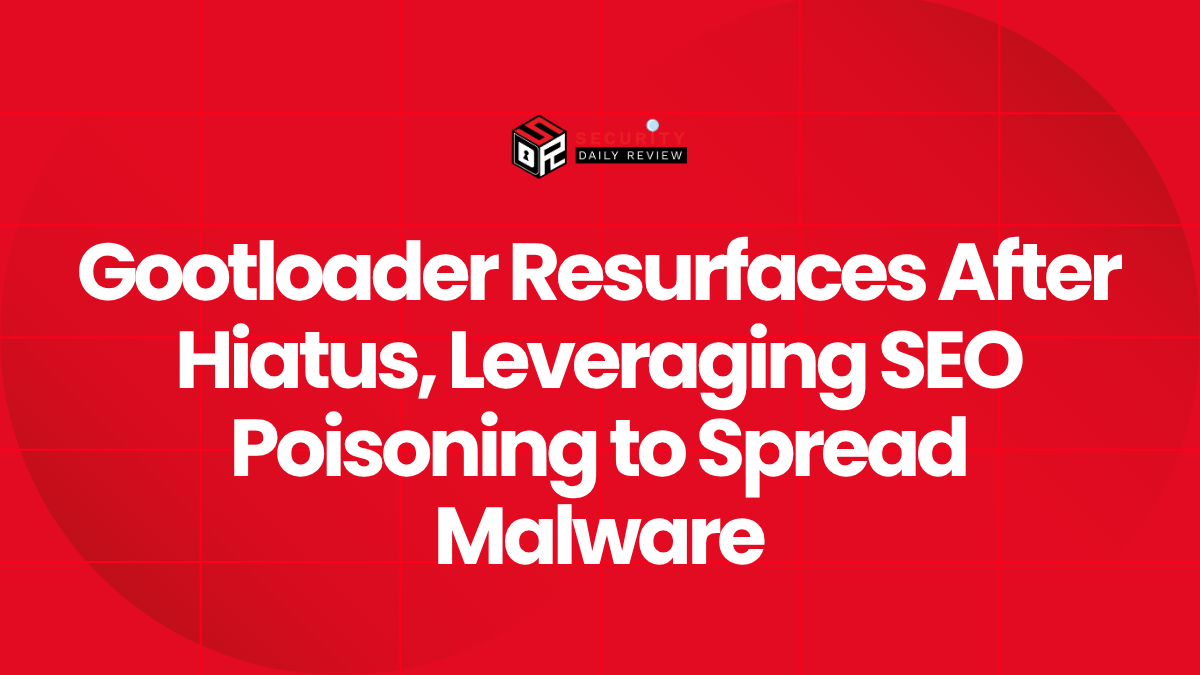The threat actor group behind the Gootloader malware loader has re-emerged after a seven-month period of inactivity, unleashing a new wave of attacks using the same deceptive search engine optimization (SEO) poisoning tactics that defined its previous campaigns. Cybersecurity researchers monitoring the group report that the malware infrastructure has been reactivated, and fake websites are once again being seeded in order to compromise systems through misleading forum posts.
A Familiar but Persistent Malware Loader Threat Returns
After lying dormant, the Gootloader operation resumes its campaign, refocusing on established SEO poisoning tactics.
Gootloader is a sophisticated malware delivery framework that specializes in initial access and payload distribution. The malware gained notoriety in past years for its reliance on “drive-by download” techniques facilitated by SEO poisoning — manipulating search engine results to lead users to fake but plausible-looking webpages, particularly legal or business-related forums.
The reactivated campaign marks the return of a notable threat actor that relies less on phishing emails and more on poisoning internet search results to lure victims to malicious sites. The delivery method exploits typical user behavior, such as seeking out document templates or legal advice, and capitalizes on the perceived trustworthiness of discussion forums.
SEO Poisoning Remains Gootloader’s Primary Infection Vector
The operation manipulates search engine rankings to attract victims looking for specific business-related content.
In current campaigns, attackers are again promoting websites designed to appear as legitimate discussion threads or document-sharing platforms. These fake pages are injected with keywords to rank highly in Google and Bing search results, enabling them to trap unsuspecting visitors seeking contract samples, legal forms, or business policies.
Security researchers note that the mechanism remains consistent with previous Gootloader operations:
- Unsuspecting users search for niche business or legal documents
- SEO manipulation ranks malicious pages near the top of search engine results
- Clicking the link leads to a fake forum or blog post with a download link
- The download contains a ZIP archive or JavaScript file that, when executed, installs the Gootloader payload
This stealthy infection vector largely bypasses traditional phishing detection mechanisms since the initial compromise doesn’t rely on email.
Malware Payloads Target Multiple Geographies and Sectors
Researchers detect targeting aligned with regional interests, suggesting tailored campaigns.
Even though Gootloader is a malware loader — not the final stage malicious payload — its reactivation raises concern due to the types of malware it typically installs. In past campaigns, Gootloader has been observed deploying:
- Gootkit Remote Access Trojan (RAT)
- Cobalt Strike for post-exploitation
- Other commodity malware used by ransomware affiliates
Recent observations suggest that the fake websites are regionally focused, with localized content to increase credibility with the intended victims. Targeted regions include the United States, United Kingdom, and several European countries. The fake content often includes local legal terms or references that mirror the search terms users enter.
This regional focus implies that threat actors are not simply reviving their infrastructure, but actively tailoring campaigns for maximum compromise potential by adjusting content based on geography and trending search queries.
Gootloader’s Infrastructure Reveals Increased Sophistication
Newly observed infrastructure improvements hint at better evasion and resilience.
Analyses of the revived Gootloader backend infrastructure show signs that the threat actor has refined its methods over the hiatus. For instance:
- Malicious sites now exhibit improved cloaking techniques to evade automated security crawlers
- The JavaScript payloads are obfuscated more deeply than before
- Archive files are delivered via less suspicious hosting services that mimic legitimate platforms
These changes suggest a higher degree of operational security and a deeper investment in maintaining long-term campaigns. It’s also likely that the group continued development during the dormant phase, refining their Tactics, Techniques, and Procedures (TTPs).
Mitigating the Risk of SEO-Based Malware Attacks
Organizations and individuals must adjust their defenses to address non-phishing-based initial access vectors.
Traditional email security solutions may not detect these types of threats since the attack vector relies on users voluntarily downloading and executing malicious files from seemingly innocuous websites found through organic searches.
Recommended defensive actions include:
- Web content filtering to block access to known or suspected malicious domains
- Endpoint Detection and Response (EDR) tools that analyze scripting behavior and file execution chains
- Security education to promote careful examination of unfamiliar sites, even if found via search engines
- Reputational analysis tools to flag rapid domain registration patterns, often associated with such operations
Additionally, organizations should monitor employee use of template documents or public document searches — particularly legal or HR forms — as these are often used as bait in Gootloader campaigns.
A Reminder That Dormant Threats Can Reactivate
The Gootloader resurgence underscores the persistent nature of seasoned threat actors and the evolving nature of malware distribution.
While Gootloader had been off the radar for several months, the latest campaign confirms it remains a potent and adaptable threat. By continuing to exploit user trust in search engines rather than relying solely on phishing emails, the actors behind Gootloader reinforce the need for layered defenses that extend beyond perimeter-based strategies.
Cybersecurity teams must remain vigilant against SEO poisoning tactics and energetic about educating users on the risks of downloading files from search results, even when those results appear in reputable environments. As the cyber threat landscape continues to evolve, approaches like those used by Gootloader showcase the persistent innovation at play from experienced threat actors.









